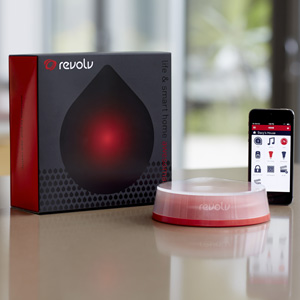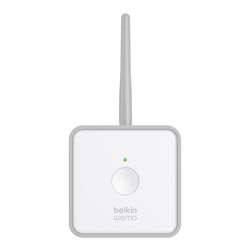
One of the fastest-growing areas in consumer electronics is home automation. It’s not a straightforward category, but more of an overarching term used to describe technologies that create some form of automation for everyday events or needs. Think of a fully automated home like something out of The Jetsons;Your alarm clock goes off, and the lights in your bedroom automatically come on, slowly brightening to full strength. The thermostat slowly brings the room to a comfortable temperature even before your alarm sounds so that you’re comfy getting out from under the blankets. Your coffee starts brewing in the other room when you get out of the shower so that it’s hot when you get to the kitchen. It’s a specific instantiation of the idea of the ‘internet of things,’ communication between previously unnetworked objects.
While these products are designed for home use, they could be very useful in libraries, especially smaller ones. There are a few clear leaders in the home automation area at this point, but one of my favorites is the company Belkin and their line of WeMo devices. WeMo is Belkin’s proprietary Wi-Fi based communication protocol that allows you to control any WeMo product via an Android or iOS device.
 One of the products from the WeMo line, which is growing extensively, has me very excited. The WeMo Maker encourages users to add internet connectivity to any device controlled with a DC switch: research robotics, motors, sprinkler systems, and antennas. It also lets you monitor and manage a wide range of 5V DC sensors from anywhere using a smartphone or tablet. Using the free WeMo app to integrate the WeMo Maker into the WeMo ecosystem, you can, for instance, program your sprinkler system to deactivate if moisture is detected or open the blinds at sunrise from Monday to Friday. WeMo Maker also works with IFTTT, so you can create unique recipes and bring the internet of things to your fingertips. Now you not only control what they create with their system, you can create your own objects that respond to control over the internet. Very exciting, especially as libraries continue to embrace Making as a way to improve their own processes.
One of the products from the WeMo line, which is growing extensively, has me very excited. The WeMo Maker encourages users to add internet connectivity to any device controlled with a DC switch: research robotics, motors, sprinkler systems, and antennas. It also lets you monitor and manage a wide range of 5V DC sensors from anywhere using a smartphone or tablet. Using the free WeMo app to integrate the WeMo Maker into the WeMo ecosystem, you can, for instance, program your sprinkler system to deactivate if moisture is detected or open the blinds at sunrise from Monday to Friday. WeMo Maker also works with IFTTT, so you can create unique recipes and bring the internet of things to your fingertips. Now you not only control what they create with their system, you can create your own objects that respond to control over the internet. Very exciting, especially as libraries continue to embrace Making as a way to improve their own processes.
My other favorite product in the automation category is Revolv, a solution to what can be a vexing problem for people just beginning to figure out how to handle automating their spaces. With companies competing for the different parts of your home and office, it’s not unlikely that the best-of-breed for a given category might come from different companies. This would mean different methods of control for each: a different app for your lights, your thermostat, your door lock. Revolv seeks to solve this by building a central hub that speaks the language of all the other bits of your system. It’s a sort of translator, and means that you can have just one app on your phone to control your entire home or office.
As the internet of things grows, it’s safe to say that anything that can be digitally controlled or monitored probably will be. Over the next few years, I hope that we see libraries starting to embed these sorts of experiences and controls into their spaces. Imagine a space where patrons can enter a carrel and have total control over everything from the lighting scheme down to the color of the room. There are so many interesting things that I think may emerge from this area, I can’t wait to see how clever librarians leverage these tools into awesome experiences for their patrons.
JASON GRIFFEY is head of library information technology at University of Tennessee, Chattanooga. Read his blog, Pattern Recognition, at jasongriffey.net/wp. Follow him on Twitter: @griffey.

